A hobby as old as postage stamps themselves, philately sees the value of rare old stamps rise steadily year after year. But the price of certain exceptional pieces can reach several million dollars at auction.
Known as the Penny Black, the first postage stamp was created in May 1840 in the UK. It didn’t take long for postage stamps to become one of the most prized collectibles in the world. Sought after by collectors for their historical and cultural value, they are also sought after for their financial value. Due to printing errors or simply because of their rarity, some have become precious and are now worth a real fortune. This is why philatelists always hope to get their hands on specimens forgotten somewhere in an attic or in a page of an old stamp album, a family heirloom.
Here is our selection of ten of the most expensive stamps in the world.
one cent magenta (british guiana)
© Stan HONDA/AFP
Considered the rarest stamp in the world, the “British Guiana One-Cent Magenta” currently holds the world record for the most expensive stamp sold at auction. Indeed, it was sold for the record sum of 9.4 million dollars (7.9 million euros), during a sale organized by Sotheby’s in 2014.
Following a supply disruption, it was issued as a mass disaster in 1856 by the postmaster of British Guiana, now Guyana. Only one known example of this exceptional octagonal stamp measures 2.54 cm by 3.18 cm. Printed in black on a magenta red background and signed by the postmaster at the time, it depicts a boat surrounded by the Latin motto of this former South American colony “Damus Petimus Que Vicissim” which means “We give and expect in return”.
Its current owner, the American designer Stuart Weitzman decided to part with it on June 8, during an exceptional auction at Sotheby’s, in New York. Sometimes nicknamed “the Mona Lisa of stamps”, was sold for 8.3 million dollars (6.97 million euros).
one penny red and two pence blue post office (mauritius)
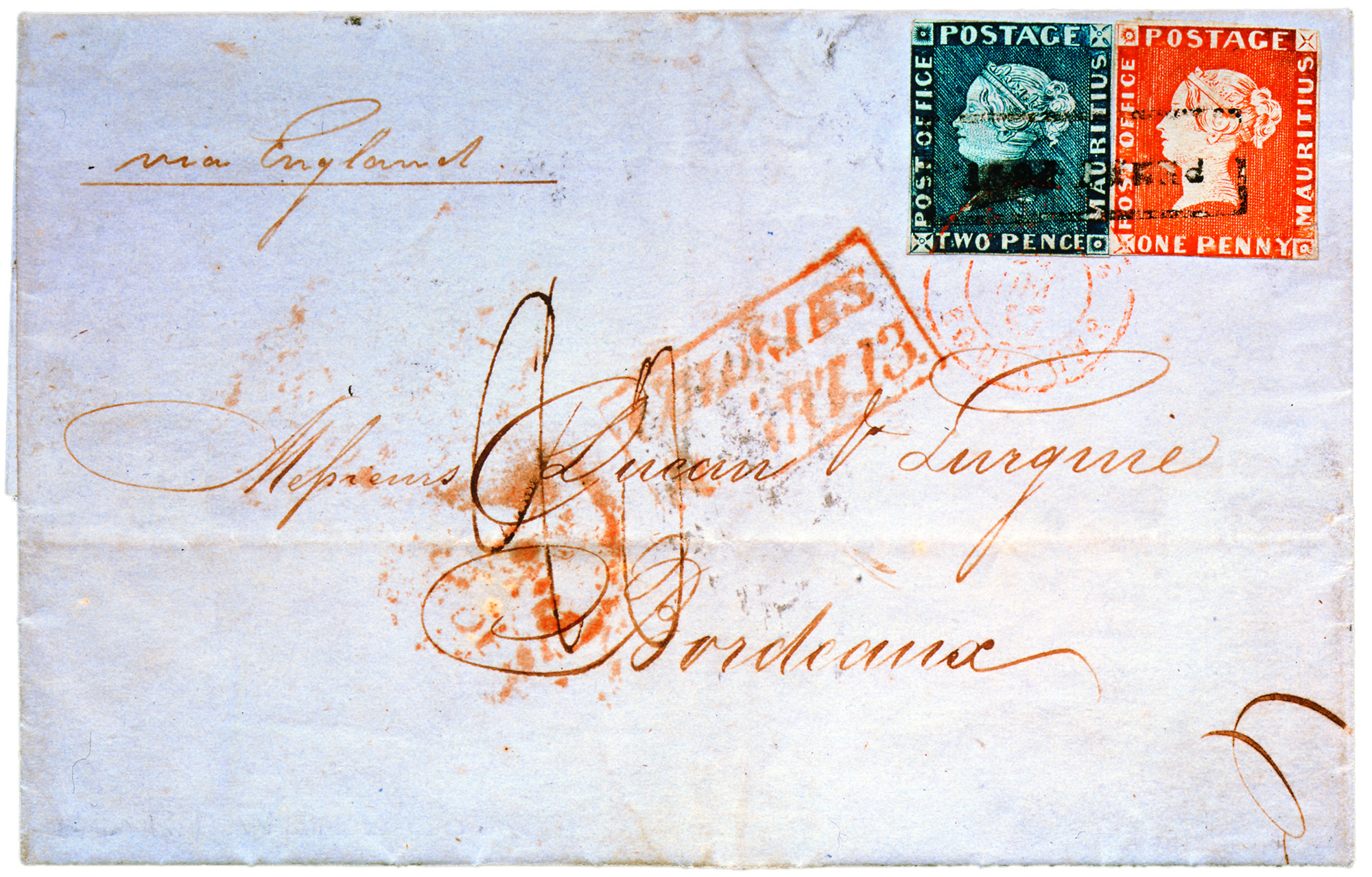
© David Feldman SA
Mauritius is one of the countries that concentrate the rarest and most expensive philatelic items in the world. British colony in the Indian Ocean from 1814 to 1968, it printed and distributed in 1847 its first issue of two non-perforated stamps worth 1 pence and 2 pence bearing the image of Queen Victoria with the mention “Post Office” instead of “Post Paid”.
Of the initial print run of 500 copies for each of the two values, only 27 copies are known and identified. In 2011, a “Two Pence Blue” was sold for $1.44 million under the hammer of auctioneer Spink, London.
But the value of these stamps can skyrocket when they are in several copies or not, still stuck on the original envelope. This is the case of six listed letters, the most famous of which is undoubtedly the “Bordeaux Envelope” or “Bordeaux Cover” (photo), which is the only known letter to be franked with the two stamps of the Post Office series. of Mauritius. Sold for $4 million in 1993 by the Swiss auction house David Feldman, it was the most expensive philatelic object in the world until 2014.
ONE CENT BENJAMIN FRANKLIN Z GRILL (USA)

Public domain
This extremely rare American stamp bearing the likeness of Benjamin Franklin was made in 1868 with a briefly used printing grid which left tiny Z-shaped indentations in the paper, hence the name Z-Grill which is its name. attached.
There are only two known copies of this stamp. One is in the collections of the New York Public Library and the other (pictured) is in the possession of American billionaire and collector Bill Gross. He acquired his “One Cent Z-Grill” in 2005 from stamp dealer Donald Sundman in exchange for his block of 4 Inverted Jenny stamps, another philatelic rarity. The value of this exchange represented 2.97 million dollars since a block of 4 “Inverted Jenny” was auctioned for this sum, the same year of this exchange. Note that Donald Sundman had bought the “Z-Grill” at auction for only 935,0000 dollars, in 1998.
tre skilling YELLOW (suede)
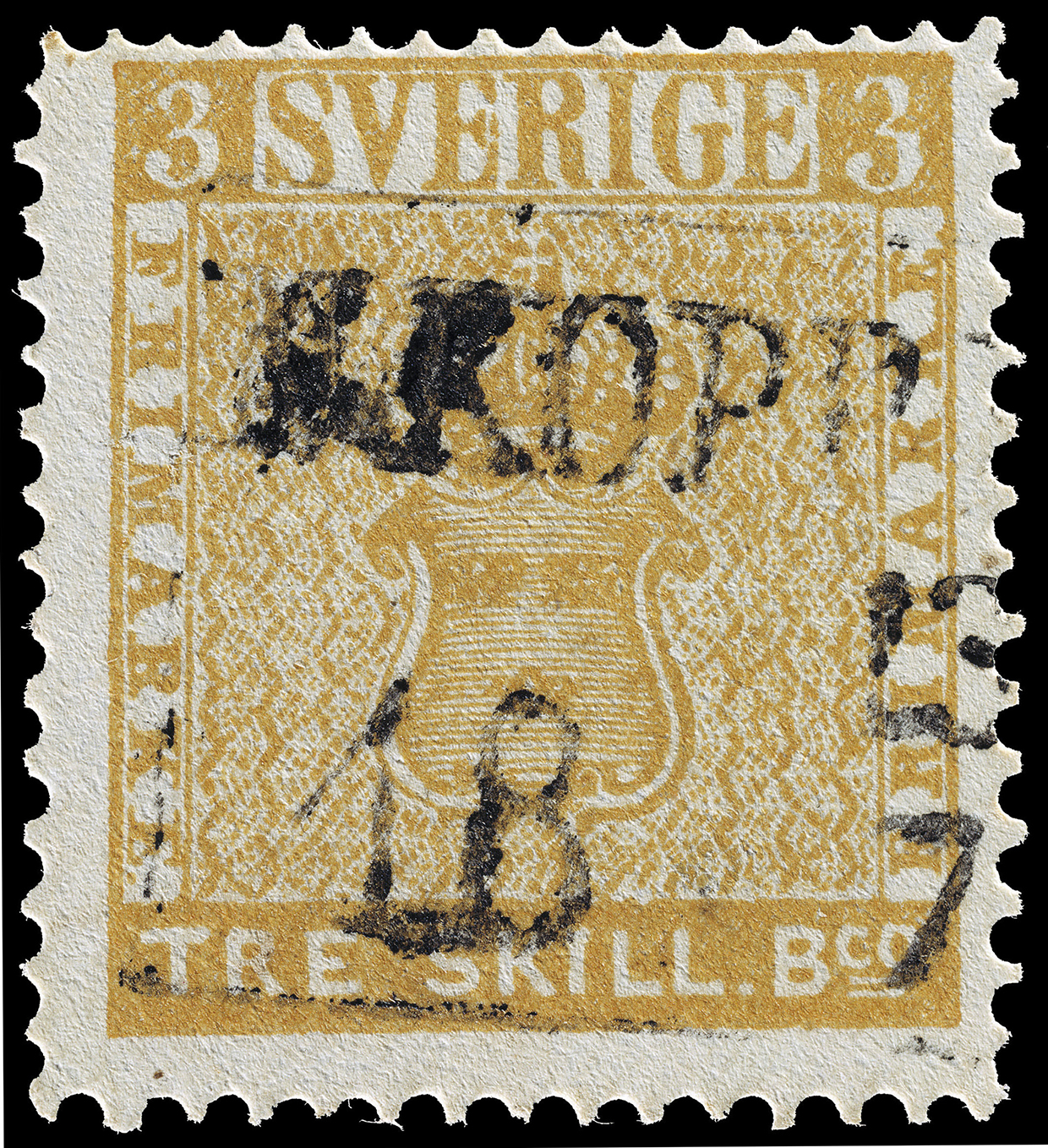
Public domain
Formerly the most expensive postage stamp in the world, the “Tre Skilling Jaune” issued by the Swedish Post, was last bought in 2010, in Geneva, during a private auction. The amount of the transaction has remained secret, as has the identity of its buyer, an international consortium. It had already been sold by the David Feldman auction house in 1984, 1990 and 1996. That year this stamp had reached the price of 2.26 million dollars.
This 3 skilling stamp was mistakenly printed in yellow in 1857 and exists in only one copy. This color anomaly is explained by the fact that during a print run of 8 yellow skilling stamps, a plate of 3 skillings, a normally green stamp, was accidentally inserted into the printing plate.
1859 Sicilian error of color (italy)
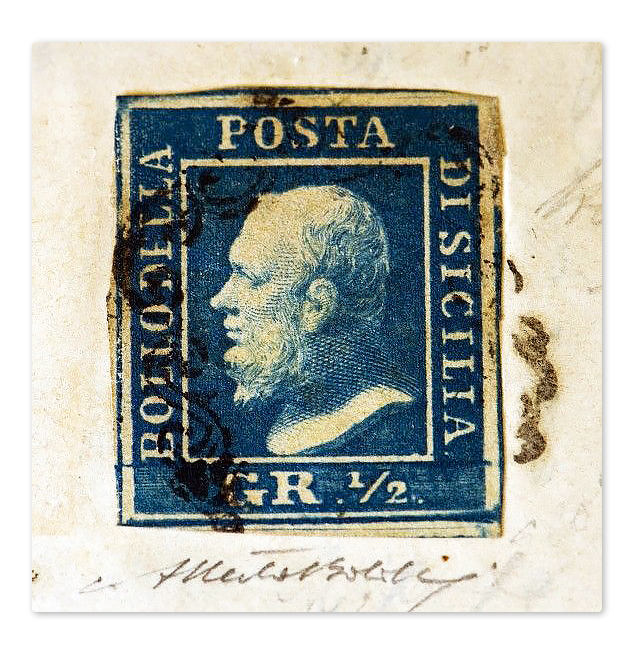
© DREYFUS GALLERY, BASEL, SWITZERLAND
Better known under the simplified name “Error of Colour”, this philatelic rarity is the most expensive Italian stamp in the world, even though at the time, Sicily belonged to an independent kingdom. Moreover, this stamp features the sovereign of the Two Sicilies, Ferdinand II. Dating from 1859, this precious Sicilian stamp with a value of 1/2 grana, was printed in blue instead of orange.
This is the only example in good condition of the two known pieces. Its rarity and its good state of conservation make this stamp a very coveted piece. Auctioned by the Dreyfus gallery in Basel in 2011, it was acquired for the sum of 2.6 million dollars by an amateur who remained anonymous.
THE WHOLE COUNTRY IS RED (CHINA)

© DR
Valuable to philatelists around the world, this very rare Chinese stamp was withdrawn from sale just hours after it was put into circulation on November 24, 1968, following the discovery of a printing error. Indeed, displaying the political slogan “The whole country is red”, it represents the Chinese people smiling and holding up “Mao’s Little Red Book”, and above it, a map of mainland China colored in red. but Taiwan, yet still claimed by Beijing, remained blank, thus contradicting the communist maxim inscribed on the stamp. Although in fact the island of Taiwan has remained independent from China since 1949, Beijing has never ceased to assert its sovereignty over this territory. In an interview with AFP in 2009, stamp designer Wang Weisheng said, “For a very long time, I really feared being imprisoned.”
Only nine copies of this stamp glorifying communism are known and listed. One of these specimens, in immaculate and unused condition, sold for $2 million in November 2018 at an auction in Beijing, organized by the China Guardian auction house.
inverted jenny (usa)

© Angela WEISS/AFP
A very rare US stamp, the ‘Jenny Inverted’ or ‘Jenny Renversé’ features a Curtiss Jenny JN-4HM biplane that has been printed upside down, upside down. This printing error gives all its value to this stamp with a face value of 24 cents, issued in 1918 in only one hundred copies on a single sheet.
Accustomed to achieving sales records, this extremely rare stamp reached, in 2019, the price of 1.74 million dollars for a block of 4 copies and 510,000 dollars for a single stamp, during a sale at Spink in New York.
Note that on June 8, 2021 in New York, Sotheby’s put up for sale at the request of Stuart Weitzman, the popular celebrity shoemaker and famous collector, an extremely rare block of 4 “Jenny Inverted” (photo), which he had acquired in 2014 for $4.8 million. This lot was sold for a slightly higher price at $4.9 million (about 4.11 million euros) with all proceeds from the sale going to charities including the designer’s own foundation , The Weitzman Family Foundation.
BADEN 9 KREUZER ERROR (GERMANY)
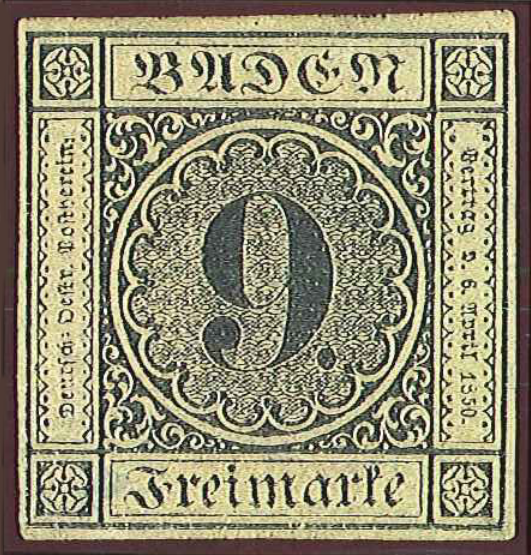
© David FELDMAN SA
The “Baden 9 Kreuzer” is an ultra-rare German stamp, printed in 1851 by the Grand Duchy of Baden. It is a color error that is at the origin of this rarity. Instead of being colored pink like all other 9 kreuzer stamps, one lot ended up unintentionally printed in green, the color intended for stamps with a value of 6 kreuzer.
Only four specimens including this color error were known until an American collector discovered, in 2018, a fifth specimen in the family philatelic album which he had inherited after the death of his mother. A copy was bought for more than $2.06 million during a sale organized in Switzerland by the philatelic auction house David Feldman in 2008.
1897 RED REVENUE SMALL ONE DOLLAR (china)
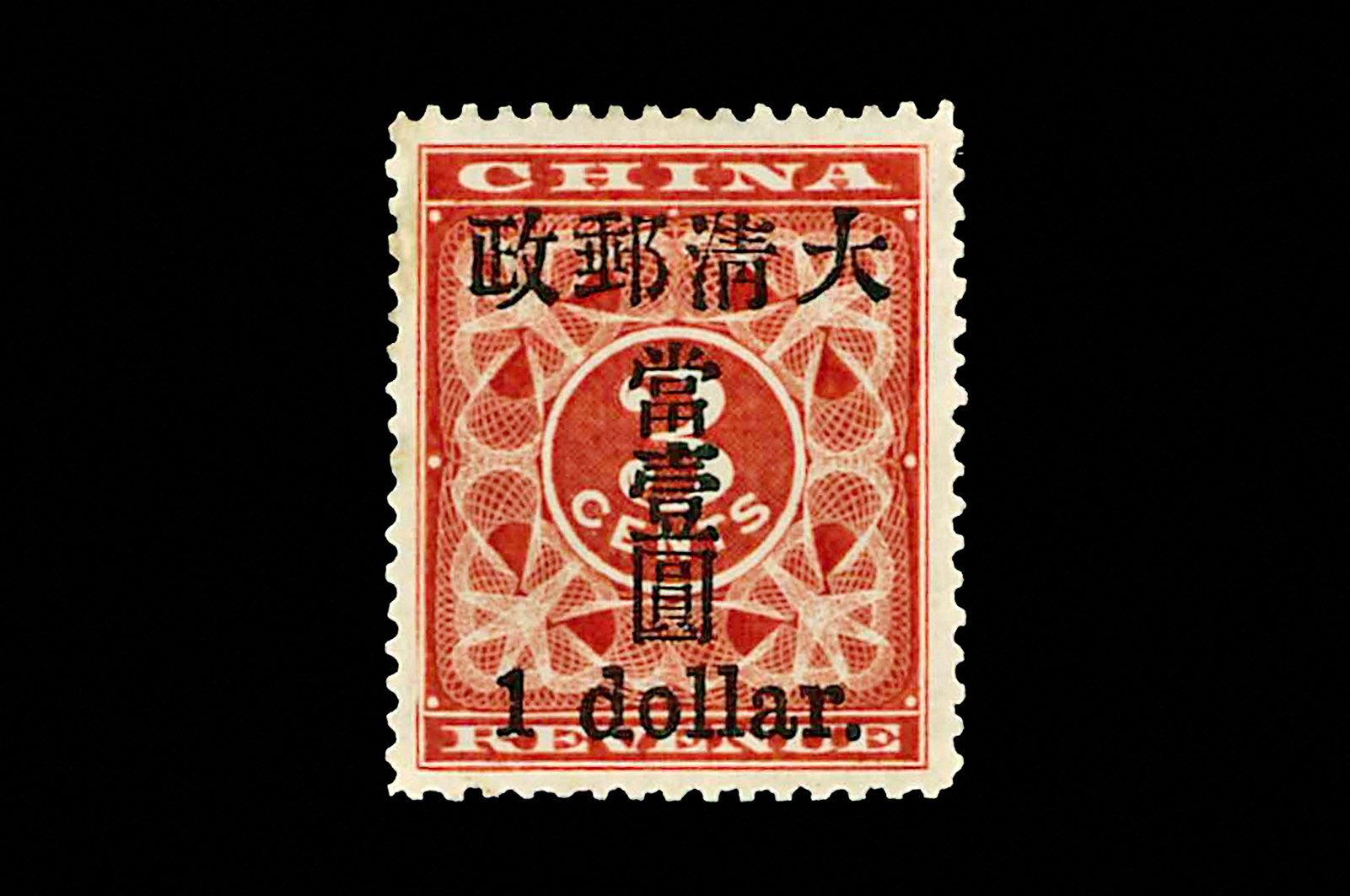
© INTERASIA AUCTIONS LTD/AFP
The “1897 Red Revenue Small One Dollar” is China’s rarest stamp regularly issued during the Qing Dynasty. Originally, it is a revenue stamp used as a postage stamp after being overprinted and surcharged. The Red Revenue series, of which the Small One Dollar is a part, is considered the first truly Chinese national issue. This bright red stamp, symbolizing luck and good fortune in Chinese culture is precious because it comes from a limited issue. Indeed, the Chinese characters in the overprint of the Small One Dollar having been considered too small, a second version of the Red Revenue One Dollar with larger characters was subsequently issued, replacing the first.
Only 32 copies of the “1897 Red Revenue Small One Dollar” have been listed. A specimen of this major world rarity was sold for $890,000 in July 2013 in Hong Kong, during the Interasia Auctions auction.
A block of four “Red Revenue Small One Dollar” is considered the centerpiece of Chinese philately. In 2009, during a private transaction between the Hong Kong banker and philatelist Lam Manyin and the Shanghai real estate magnate Ding Jingsong, the latter paid the sum of 18.8 million dollars for this block of four “Red Revenue Small One Dollar” as well as another Chinese stamp, a “Large Dragon” dating from 1878.
1 vermilion franc Ceres (France)

© SPINK & SON/BEHR
More modest, the most expensive French stamp was sold for 924,000 euros, or 968,000 dollars, in November 2003, during an auction organized by Spink and Behr, in Paris. It is actually a block of 4 stamps of 1 franc vermilion, with the effigy of Cérès, issued in 1849 and which includes a head-to-tail, that is to say that one of the stamps has been printed upside down. This anomaly can be explained by a careless mistake made by the printer when creating the printing plate, produced at the time stamp by stamp.
The 1 franc vermilion Cérès is the star stamp of French philately because it was part of the first issue of French stamps in January 1849 but it was withdrawn from circulation in December of the same year and replaced by a new version bearing a variation of color. The emblematic 1 vermilion franc is listed at 125,000 euros, or around 149,000 dollars, in the Yvert and Tellier 2021 listing catalog, the “bible” of philatelists.

![Selon son patron Philippe Wahl, La Poste pourrait abandonner le timbre rouge, dit «à grande vitesse», qui garantit une distribution de la lettre le lendemain.[MYCHELE DANIAU / AFP]](https://static.cnews.fr/sites/default/files/styles/image_375_210/public/capture_decran_2021-02-27_a_16.41.34_603a685de5baa.png?itok=9d2GLV_L)

![La série de timbres réalisée par Henning Trollbäck présente certains des 16 objectifs environnementaux du gouvernement suédois.[Capture décran Twitter]](https://static.cnews.fr/sites/default/files/styles/image_375_210/public/capture_decran_2021-01-14_a_11.05.40_6000179ed4b42_0.png?itok=TIHwG3xs)